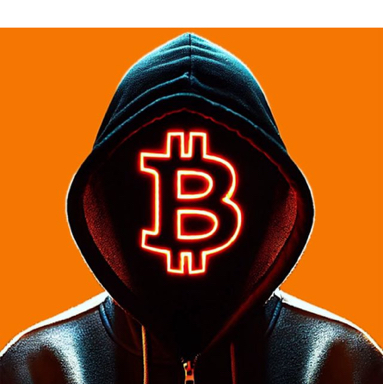Bitget: Peringkat 4 teratas dalam volume perdagangan harian global!
Pangsa pasar BTC62.56%
Listing terbaru di Bitget : Pi Network
BTC/USDT$85395.66 (+2.86%)Indeks Fear and Greed45(Netral)
Indeks altcoin season:0(Bitcoin season)
Koin terlisting di Pra PasarPAWS,WCTTotal arus bersih ETF Bitcoin spot -$1M (1H); -$872.6M (7H).Paket hadiah sambutan untuk pengguna baru senilai 6200 USDT.Klaim sekarang
Trading kapan saja, di mana saja dengan aplikasi Bitget. Unduh sekarang
Bitget: Peringkat 4 teratas dalam volume perdagangan harian global!
Pangsa pasar BTC62.56%
Listing terbaru di Bitget : Pi Network
BTC/USDT$85395.66 (+2.86%)Indeks Fear and Greed45(Netral)
Indeks altcoin season:0(Bitcoin season)
Koin terlisting di Pra PasarPAWS,WCTTotal arus bersih ETF Bitcoin spot -$1M (1H); -$872.6M (7H).Paket hadiah sambutan untuk pengguna baru senilai 6200 USDT.Klaim sekarang
Trading kapan saja, di mana saja dengan aplikasi Bitget. Unduh sekarang
Bitget: Peringkat 4 teratas dalam volume perdagangan harian global!
Pangsa pasar BTC62.56%
Listing terbaru di Bitget : Pi Network
BTC/USDT$85395.66 (+2.86%)Indeks Fear and Greed45(Netral)
Indeks altcoin season:0(Bitcoin season)
Koin terlisting di Pra PasarPAWS,WCTTotal arus bersih ETF Bitcoin spot -$1M (1H); -$872.6M (7H).Paket hadiah sambutan untuk pengguna baru senilai 6200 USDT.Klaim sekarang
Trading kapan saja, di mana saja dengan aplikasi Bitget. Unduh sekarang



Harga ai16zAI16Z
Dilisting
Mata uang kuotasi:
IDR
Rp2,533.06+10.48%1D
Konverter AI16Z ke IDR
AI16Z
IDR
1 AI16Z = 0.00 IDR
Bitget menawarkan biaya transaksi terendah di antara semua platform perdagangan utama. Semakin tinggi level VIP kamu, semakin menguntungkan tarifnya.
Harga
TradingView
Kap. pasar
Grafik harga ai16z (AI16Z/IDR)
Terakhir diperbarui pada 2025-04-13 03:26:10(UTC+0)
Kapitalisasi pasar:Rp2,786,364,961,176.49
Kapitalisasi pasar yang sepenuhnya terdilusi:Rp2,786,364,961,176.49
Volume (24j):Rp1,321,916,044,265.94
Volume 24j / kap. pasar:47.44%
Tertinggi 24j:Rp2,639.38
Terendah 24j:Rp2,277.54
Tertinggi sepanjang masa:Rp41,639.28
Terendah sepanjang masa:Rp28.98
Suplai beredar:1,099,998,700 AI16Z
Total suplai:
1,099,998,690.35AI16Z
Tingkat peredaran:100.00%
Supply maks.:
1,099,999,958.01AI16Z
Harga dalam BTC:0.{5}1767 BTC
Harga dalam ETH:0.{4}9268 ETH
Harga pada kapitalisasi pasar BTC:
Harga pada kapitalisasi pasar ETH:
Kontrak:
HeLp6N...4V98jwC(Solana)
Selengkapnya
Bagaimana perasaan kamu tentang ai16z hari ini?
Catatan: Informasi ini hanya untuk referensi.
Harga ai16z hari ini dalam IDR
Harga live ai16z hari ini adalah Rp2,533.06 IDR, dengan kapitalisasi pasar saat ini sebesar Rp2.79T. Harga ai16z naik sebesar 10.48% dalam 24 jam terakhir, dan volume perdagangan 24 jam adalah Rp1.32T. Tingkat konversi AI16Z/IDR (ai16z ke IDR) diperbarui secara real time.
Riwayat harga ai16z (IDR)
Harga ai16z -54.51% selama setahun terakhir. Harga tertinggi AI16Z dalam IDR pada tahun lalu adalah Rp41,639.28 dan harga terendah AI16Z dalam IDR pada tahun lalu adalah Rp28.98.
WaktuPerubahan harga (%) Harga terendah
Harga terendah Harga tertinggi
Harga tertinggi 
 Harga terendah
Harga terendah Harga tertinggi
Harga tertinggi 
24h+10.48%Rp2,277.54Rp2,639.38
7d+21.29%Rp1,685.45Rp2,639.38
30d-16.75%Rp1,685.45Rp3,787.72
90d-86.04%Rp1,685.45Rp27,413.95
1y-54.51%Rp28.98Rp41,639.28
Sepanjang masa-53.68%Rp28.98(2024-10-25, 170 hari yang lalu )Rp41,639.28(2025-01-02, 101 hari yang lalu )
Berapa harga tertinggi ai16z?
Harga tertinggi sepanjang masa (ATH) dari ai16z di IDR adalah Rp41,639.28, yang tercatat pada 2025-01-02. Dibandingkan dengan ATH ai16z, harga ai16z saat ini turun sebesar 93.92%.
Berapa harga terendah ai16z?
Harga terendah sepanjang masa (ATL) dari ai16z di IDR adalah Rp28.98, yang tercatat pada 2024-10-25. Dibandingkan dengan ATL ai16z, harga ai16z saat ini naik sebesar 8640.63%.
Prediksi harga ai16z
Kapan waktu yang tepat untuk membeli AI16Z? Haruskah saya beli atau jual AI16Z sekarang?
Ketika memutuskan apakah akan membeli atau menjual AI16Z, Anda harus terlebih dahulu mempertimbangkan strategi trading Anda sendiri. Aktivitas trading trader jangka panjang dan trader jangka pendek juga akan berbeda. Analisis teknikal AI16Z Bitget dapat memberi Anda referensi untuk trading.
Menurut Analisis teknikal 4J AI16Z, sinyal tradingnya adalah Kuat beli.
Menurut Analisis teknikal 1H AI16Z, sinyal tradingnya adalah Jual.
Menurut Analisis teknikal 1M AI16Z, sinyal tradingnya adalah Jual.
Berapa harga AI16Z di 2026?
Berdasarkan model prediksi kinerja harga historis AI16Z, harga AI16Z diproyeksikan akan mencapai Rp5,369.19 di 2026.
Berapa harga AI16Z di 2031?
Di tahun 2031, harga AI16Z diperkirakan akan mengalami perubahan sebesar +28.00%. Di akhir tahun 2031, harga AI16Z diproyeksikan mencapai Rp8,816.13, dengan ROI kumulatif sebesar +271.00%.
FAQ
Berapa harga ai16z saat ini?
Harga live ai16z adalah Rp2,533.06 per (AI16Z/IDR) dengan kapitalisasi pasar saat ini sebesar Rp2,786,364,961,176.49 IDR. Nilai ai16z sering mengalami fluktuasi karena aktivitas 24/7 yang terus-menerus di pasar kripto. Harga ai16z saat ini secara real-time dan data historisnya tersedia di Bitget.
Berapa volume perdagangan 24 jam dari ai16z?
Selama 24 jam terakhir, volume perdagangan ai16z adalah Rp1.32T.
Berapa harga tertinggi sepanjang masa (ATH) dari ai16z?
Harga tertinggi sepanjang masa dari ai16z adalah Rp41,639.28. Harga tertinggi sepanjang masa ini adalah harga tertinggi untuk ai16z sejak diluncurkan.
Bisakah saya membeli ai16z di Bitget?
Ya, ai16z saat ini tersedia di exchange tersentralisasi Bitget. Untuk petunjuk yang lebih detail, bacalah panduan Bagaimana cara membeli ai16z kami yang sangat membantu.
Apakah saya bisa mendapatkan penghasilan tetap dari berinvestasi di ai16z?
Tentu saja, Bitget menyediakan platform perdagangan strategis, dengan bot trading cerdas untuk mengotomatiskan perdagangan Anda dan memperoleh profit.
Di mana saya bisa membeli ai16z dengan biaya terendah?
Dengan bangga kami umumkan bahwa platform perdagangan strategis kini telah tersedia di exchange Bitget. Bitget menawarkan biaya dan kedalaman perdagangan terdepan di industri untuk memastikan investasi yang menguntungkan bagi para trader.
Berita ai16z
Lihat selengkapnya
Pasar ai16z
Kepemilikan ai16z berdasarkan konsentrasi
Whale
Investor
Ritel
Alamat ai16z berdasarkan waktu kepemilikan
Holder
Cruiser
Trader
Grafik harga langsung coinInfo.name (12)

Harga ai16z global
Berapa nilai ai16z sekarang dalam mata uang lain? Terakhir diperbarui: 2025-04-13 03:26:10(UTC+0)
AI16Z ke MXN
Mexican Peso
$3.06AI16Z ke GTQGuatemalan Quetzal
Q1.16AI16Z ke CLPChilean Peso
$148.59AI16Z ke HNLHonduran Lempira
L3.9AI16Z ke UGXUgandan Shilling
Sh553.06AI16Z ke ZARSouth African Rand
R2.88AI16Z ke TNDTunisian Dinar
د.ت0.45AI16Z ke IQDIraqi Dinar
ع.د197.15AI16Z ke TWDNew Taiwan Dollar
NT$4.88AI16Z ke RSDSerbian Dinar
дин.15.56AI16Z ke DOPDominican Peso
$9.37AI16Z ke MYRMalaysian Ringgit
RM0.67AI16Z ke GELGeorgian Lari
₾0.41AI16Z ke UYUUruguayan Peso
$6.53AI16Z ke MADMoroccan Dirham
د.م.1.4AI16Z ke AZNAzerbaijani Manat
₼0.26AI16Z ke OMROmani Rial
ر.ع.0.06AI16Z ke SEKSwedish Krona
kr1.47AI16Z ke KESKenyan Shilling
Sh19.49AI16Z ke UAHUkrainian Hryvnia
₴6.23- 1
- 2
- 3
- 4
- 5
Cara Membeli ai16z(AI16Z)

Buat Akun Bitget Gratis Kamu
Daftar di Bitget dengan alamat email/nomor ponsel milikmu dan buat kata sandi yang kuat untuk mengamankan akunmu.

Verifikasi Akun Kamu
Verifikasikan identitasmu dengan memasukkan informasi pribadi kamu dan mengunggah kartu identitas yang valid.

Konversi ai16z ke AI16Z
Pilih mata uang kripto untuk diperdagangkan di Bitget.
Pelajari Lebih LanjutTrading futures perpetual AI16Z
Setelah berhasil mendaftar di Bitget dan membeli USDT atau token AI16Z, kamu bisa mulai trading derivatif, termasuk perdagangan futures dan margin AI16Z untuk meningkatkan penghasilanmu.
Harga AI16Z saat ini adalah Rp2,533.06, dengan perubahan harga 24 jam sebesar +10.48%. Trader dapat meraih profit dengan mengambil posisi long atau short pada futures AI16Z.
Bergabunglah di copy trading AI16Z dengan mengikuti elite trader.
Setelah mendaftar di Bitget dan berhasil membeli USDT atau token AI16Z, kamu juga bisa memulai copy trading dengan mengikuti elite trader.
Listing terbaru di Bitget
Listing baru
Beli lebih banyak
Di mana saya dapat membeli ai16z (AI16Z)?
Beli kripto di aplikasi Bitget
Daftar dalam hitungan menit untuk membeli kripto melalui kartu kredit atau transfer bank.
Bagian video — verifikasi cepat, trading cepat

Cara menyelesaikan verifikasi identitas di Bitget dan melindungi diri kamu dari penipuan
1. Masuk ke akun Bitget kamu.
2. Jika kamu baru mengenal Bitget, tonton tutorial kami tentang cara membuat akun.
3. Arahkan kursor ke ikon profil kamu, klik "Belum diverifikasi", dan tekan "Verifikasi".
4. Pilih negara atau wilayah penerbit dan jenis ID kamu, lalu ikuti petunjuknya.
5. Pilih "Verifikasi Seluler" atau "PC" berdasarkan preferensimu.
6. Masukkan detail kamu, kirimkan salinan kartu identitasmu, dan ambil foto selfie.
7. Kirimkan pengajuanmu, dan voila, kamu telah menyelesaikan verifikasi identitas!
Investasi mata uang kripto, termasuk membeli ai16z secara online melalui Bitget, tunduk pada risiko pasar. Bitget menyediakan cara yang mudah dan nyaman bagi kamu untuk membeli ai16z, dan kami berusaha sebaik mungkin untuk menginformasikan kepada pengguna kami secara lengkap tentang setiap mata uang kripto yang kami tawarkan di exchange. Namun, kami tidak bertanggung jawab atas hasil yang mungkin timbul dari pembelian ai16z kamu. Halaman ini dan informasi apa pun yang disertakan bukan merupakan dukungan terhadap mata uang kripto tertentu.
Konverter AI16Z ke IDR
AI16Z
IDR
1 AI16Z = 2,533.06 IDR
Bitget menawarkan biaya transaksi terendah di antara semua platform perdagangan utama. Semakin tinggi level VIP kamu, semakin menguntungkan tarifnya.
Peringkat ai16z
Penilaian rata-rata dari komunitas
4.4
Konten ini hanya untuk tujuan informasi.
Insight Bitget

BGUSER-9PTJ6TKA
1h
$AI16Z This is a continuous waste
AI16Z-2.72%

Krhatoo
1h
Just jumped into $AI16Z at market price ⚡️
Stop-loss: 0.113 ❌
Targets: 0.15 🎯 | 0.16 🎯 | 0.18 🎯 | 0.20 🎯
This one’s heating up—let’s ride the wave to the top! 🌊 🚀 💸
AI16Z-2.72%
UP-1.48%

ZORJISBGB
2h
$AI16Z Strong bounce from $0.0986 low . Currently testing $0.1350–$0.1380 resistance (near 200MA on 1H)
Next move : $0.1450 - 1560
Holding above $0.1220 keeps momentum bullish short term.
MOVE-3.02%
AI16Z-2.72%
rayanislamq
2h
$AI16Z Strong bounce from $0.0986 low . Currently testing $0.1350–$0.1380 resistance (near 200MA on 1H)
Next move : $0.1450 - 1560
Holding above $0.1220 keeps momentum bullish short term.
MOVE-3.02%
AI16Z-2.72%

𝙲𝚛𝚢𝚙𝚝𝚘𝚂𝚊𝚝Red
2h
$AI16Z Strong bounce from $0.0986 low . Currently testing $0.1350–$0.1380 resistance (near 200MA on 1H)
Next move : $0.1450 - 1560
Holding above $0.1220 keeps momentum bullish short term.
MOVE-3.02%
AI16Z-2.72%
Aset terkait
Mata uang kripto populer
Pilihan 8 mata uang kripto teratas berdasarkan kapitalisasi pasar.
Baru ditambahkan
Mata uang kripto yang baru saja ditambahkan.
Kap. pasar yang sebanding
Di antara semua aset Bitget, 8 aset ini adalah yang paling mendekati kapitalisasi pasar ai16z.
Info tambahan tentang ai16z
Ringkasan koin
Terkait koin
Terkait perdagangan
Trading
Earn
AI16Z tersedia untuk diperdagangkan di Bursa Bitget, dan dapat disimpan dalam kustodian pada Bitget Wallet. Bursa Bitget juga merupakan salah satu platform CEX pertama yang mendukung perdagangan AI16Z.
Kamu bisa trading AI16Z di Bitget.AI16Z/USDT
SpotAI16Z/USDT
MarginAI16Z/USDT
Futures USDT-M























.png)








![Sun [New]](https://img.bgstatic.com/multiLang/coinPriceLogo/b636aacee828671a4eada11cc3be99d51710867872121.png)